Philadelphia is one of the historically important cities of the United States, and it was even the capital of the country in the years 1790-1800. In the town of the Delaware River, there are countless sights and lots of early American history that give intriguing impressions from the time around the American Revolution.
It was in Philadelphia that the American Declaration of Independence of Great Britain was adopted, and in that way the city has a special status in the history of the United States. This can be looked at in more detail in Independence Hall, which formed the setting for both the declaration and for the adoption of the US Constitution.
Philadelphia is also much more than early American history. In the modern city center there are some of the country’s tallest buildings outside New York and Chicago, and here are several interesting museums with everything from French Impressionists to exciting natural history.
With the city’s location on the east coast, there are many excursion options from Philadelphia. You can, for example, go to New York to the northeast and Washington DC to the southwest and reach both in a short time by train or car. The entertainment in Atlantic City is also close by and you can also experience parts of the British colonial history around Philadelphia.
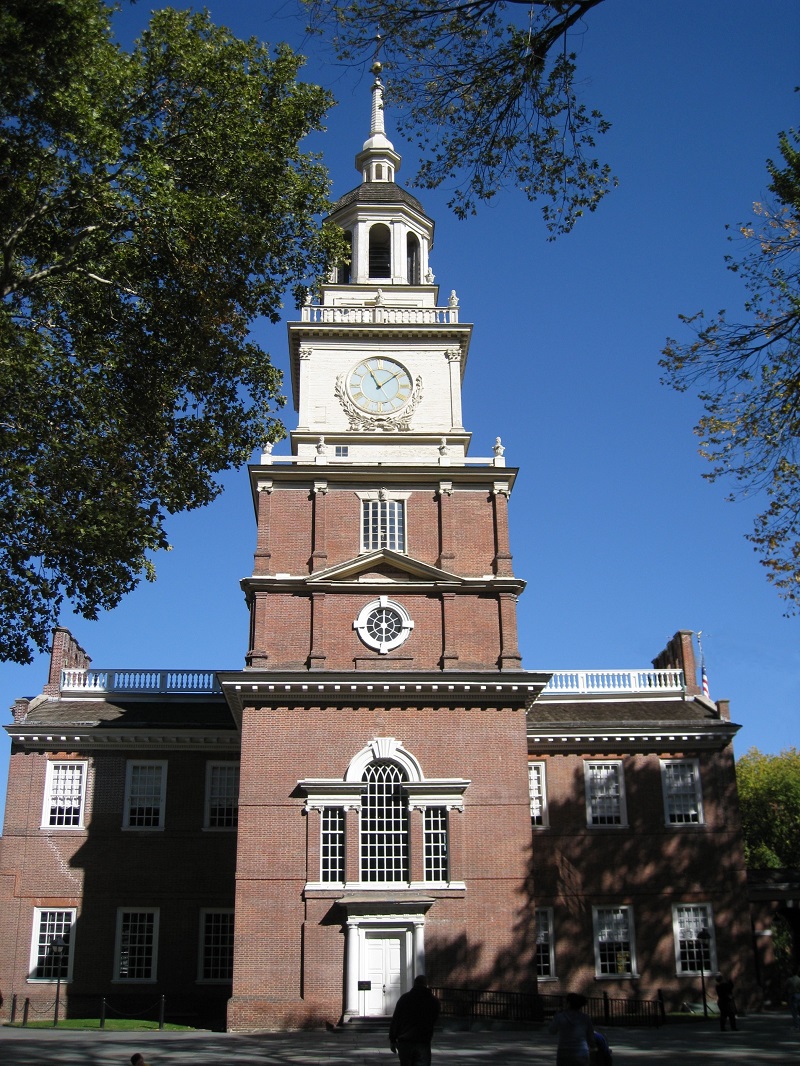
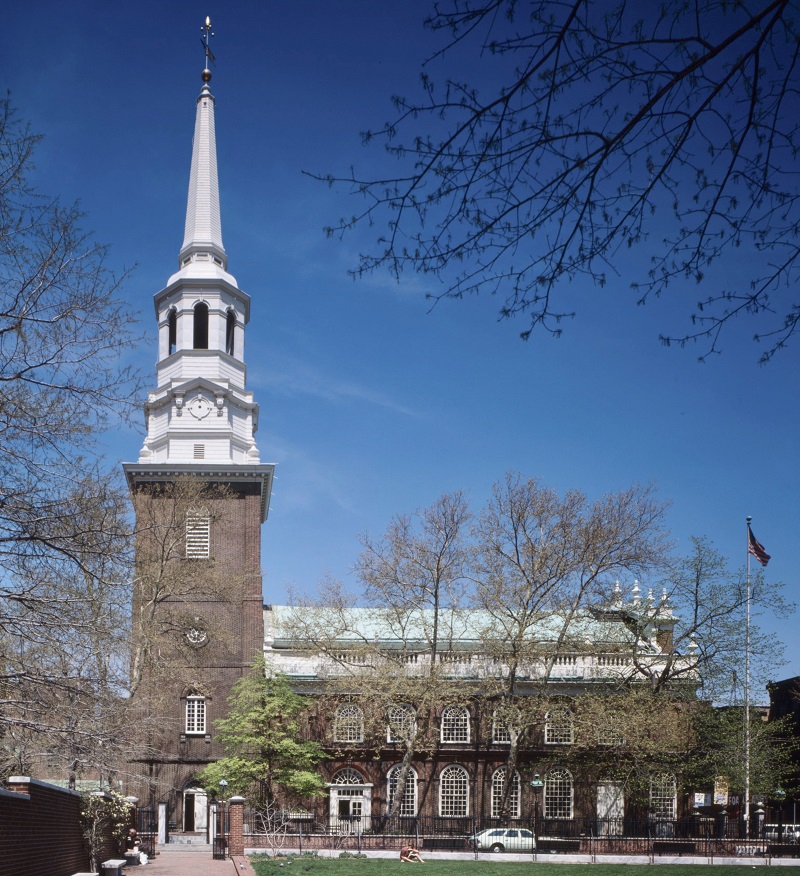
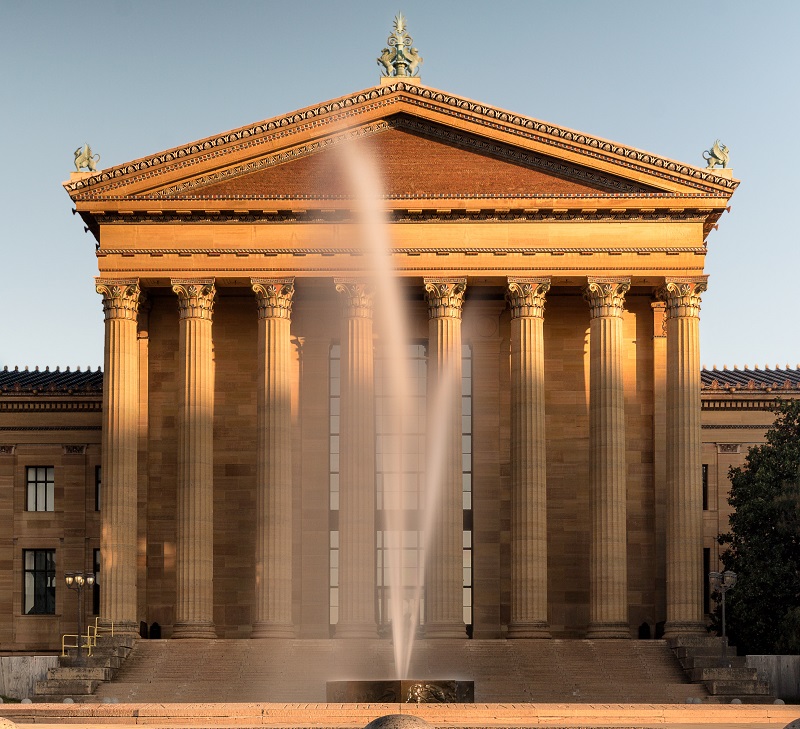
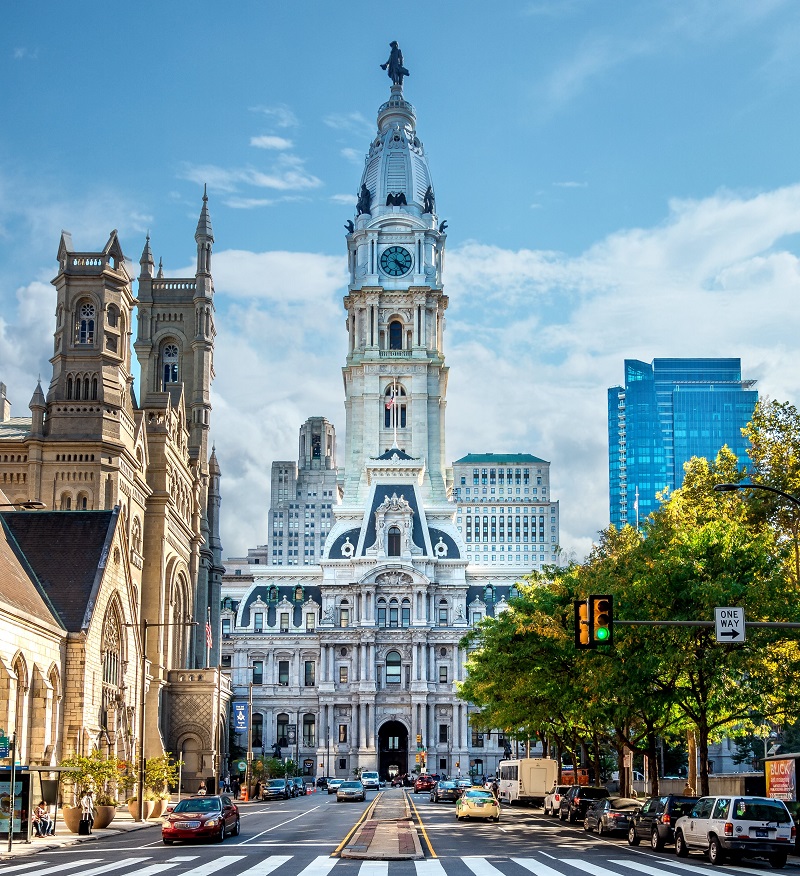
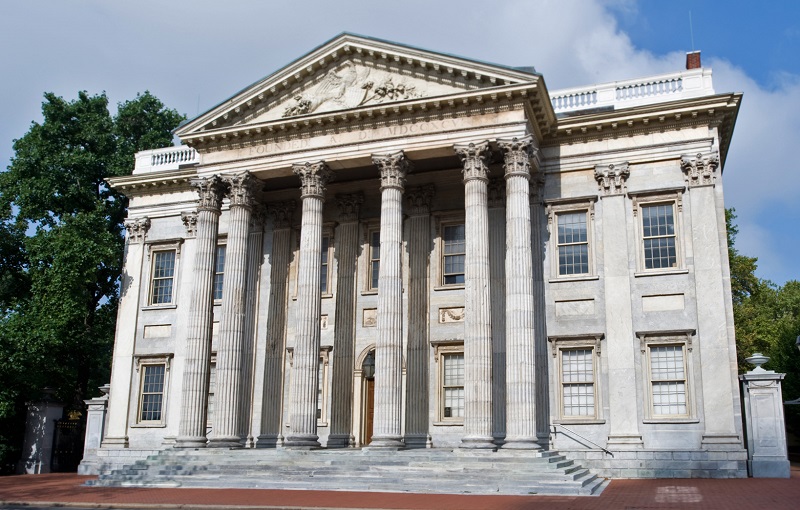
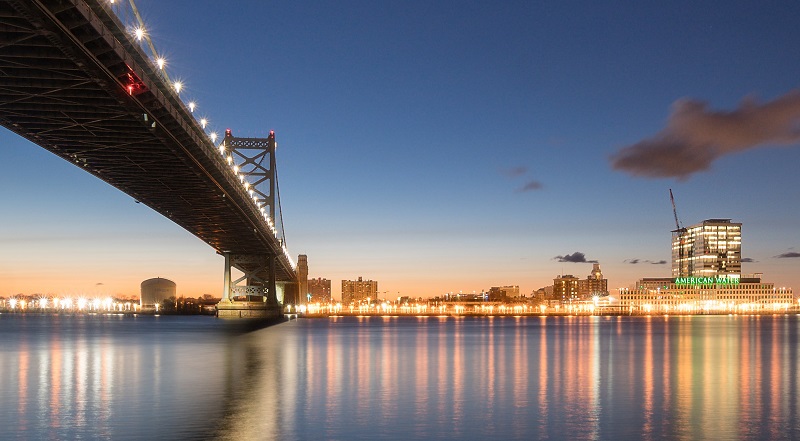
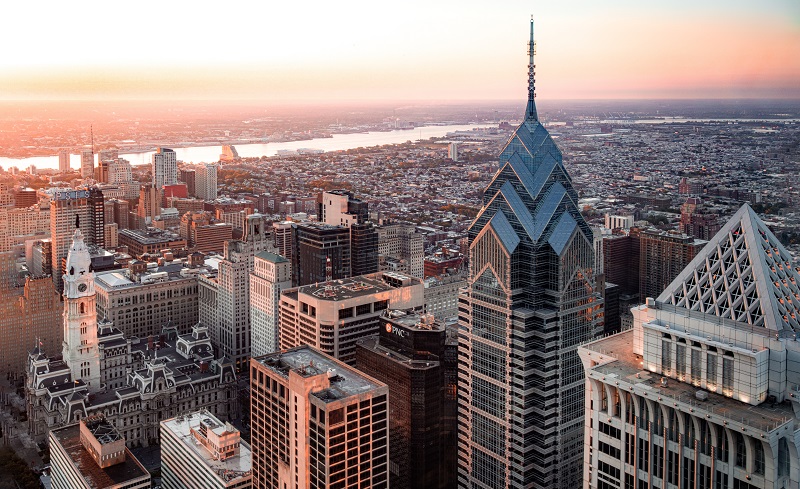
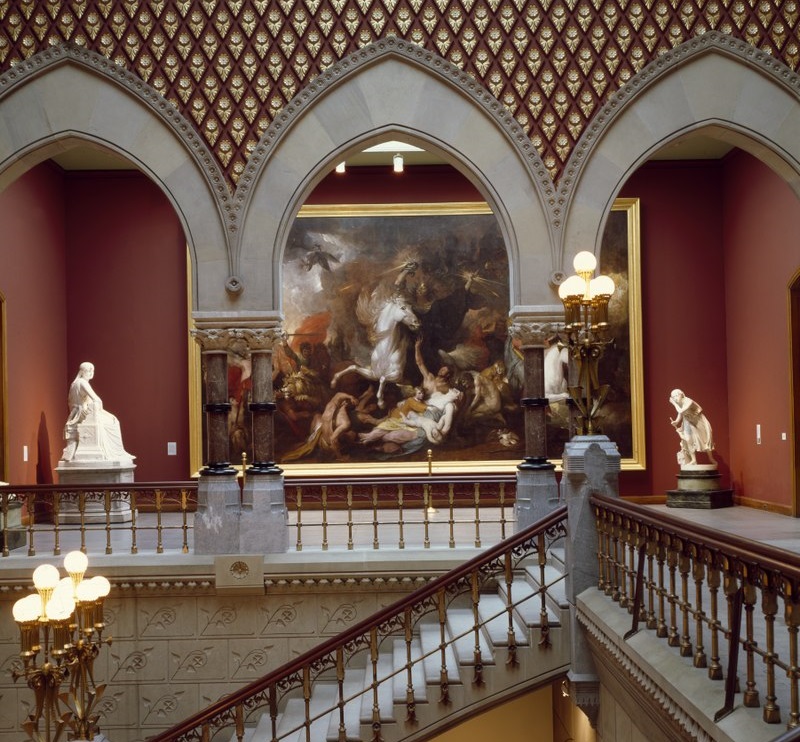
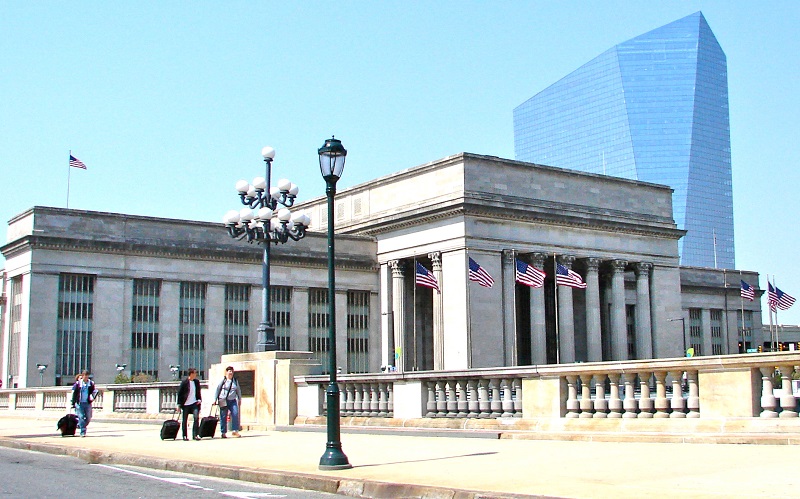
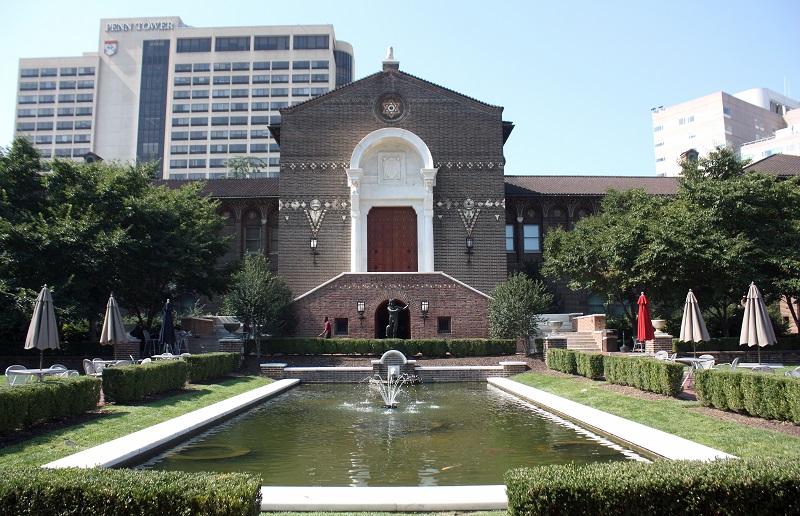
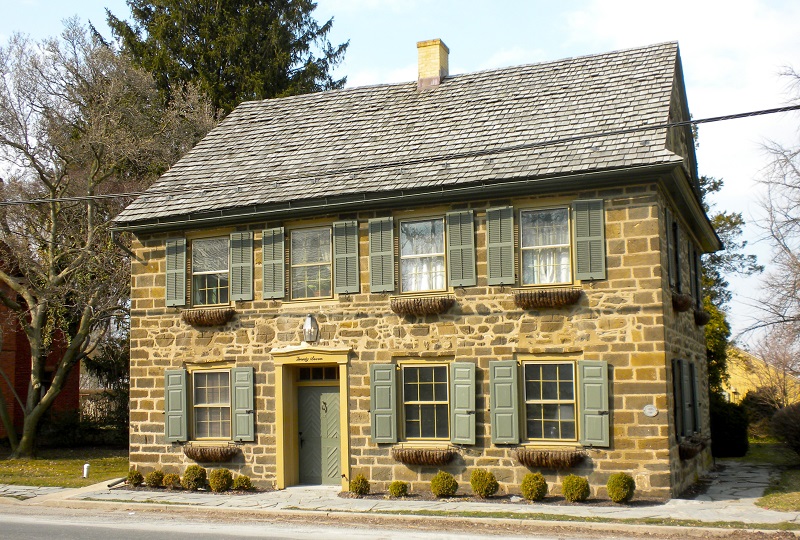
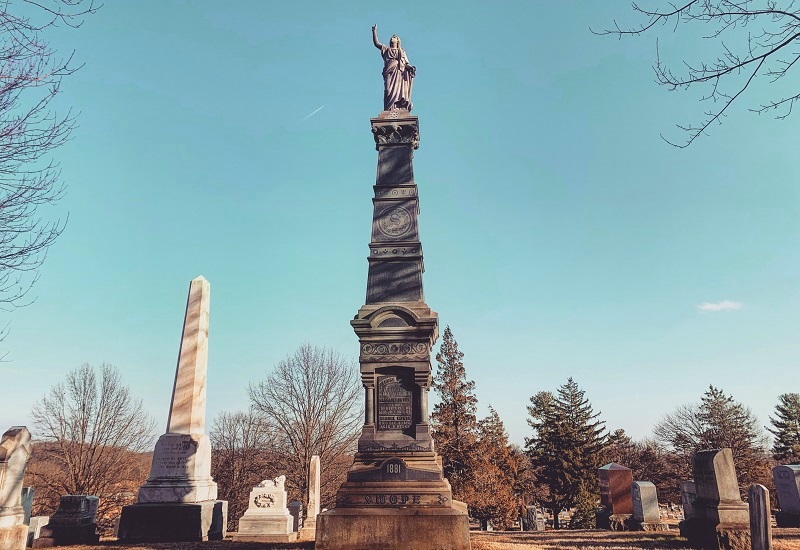

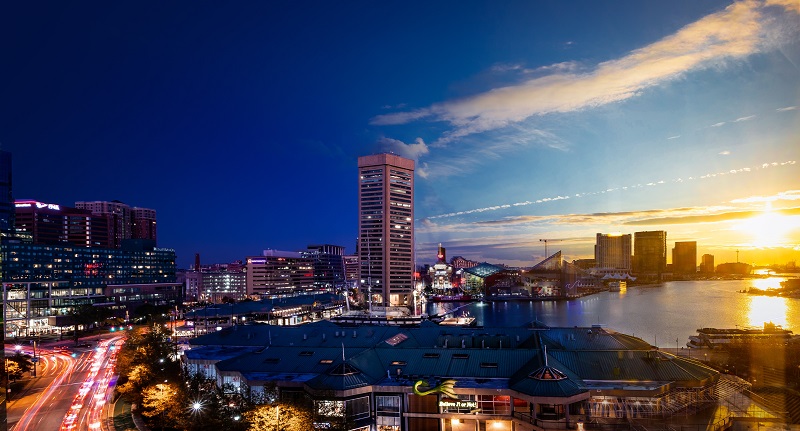
Overview of Philadelphia
Philadelphia is one of the historically important cities of the United States, and it was even the capital of the country in the years 1790-1800. In the town of the Delaware River, there are countless sights and lots of early American history that give intriguing impressions from the time around the American Revolution.
It was in Philadelphia that the American Declaration of Independence of Great Britain was adopted, and in that way the city has a special status in the history of the United States. This can be looked at in more detail in Independence Hall, which formed the setting for both the declaration and for the adoption of the US Constitution.
Philadelphia is also much more than early American history. In the modern city center there are some of the country’s tallest buildings outside New York and Chicago, and here are several interesting museums with everything from French Impressionists to exciting natural history.
With the city’s location on the east coast, there are many excursion options from Philadelphia. You can, for example, go to New York to the northeast and Washington DC to the southwest and reach both in a short time by train or car. The entertainment in Atlantic City is also close by and you can also experience parts of the British colonial history around Philadelphia.
About the upcoming Philadelphia travel guide
About the travel guide
The Philadelphia travel guide gives you an overview of the sights and activities of the American city. Read about top sights and other sights, and get a tour guide with tour suggestions and detailed descriptions of all the city’s most important churches, monuments, mansions, museums, etc.
Philadelphia is waiting for you, and at vamados.com you can also find cheap flights and great deals on hotels for your trip. You just select your travel dates and then you get flight and accommodation suggestions in and around the city.
Read more about Philadelphia and the USA
Buy the travel guide
Click the “Add to Cart” button to purchase the travel guide. After that you will come to the payment, where you enter the purchase and payment information. Upon payment of the travel guide, you will immediately receive a receipt with a link to download your purchase. You can download the travel guide immediately or use the download link in the email later.
Use the travel guide
When you buy the travel guide to Philadelphia you get the book online so you can have it on your phone, tablet or computer – and of course you can choose to print it. Use the maps and tour suggestions and you will have a good and content-rich journey.
Independence Hall • Delaware River • Art Museums • Liberty Bell
Overview of Philadelphia
Philadelphia is one of the historically important cities of the United States, and it was even the capital of the country in the years 1790-1800. In the town of the Delaware River, there are countless sights and lots of early American history that give intriguing impressions from the time around the American Revolution.
It was in Philadelphia that the American Declaration of Independence of Great Britain was adopted, and in that way the city has a special status in the history of the United States. This can be looked at in more detail in Independence Hall, which formed the setting for both the declaration and for the adoption of the US Constitution.
Philadelphia is also much more than early American history. In the modern city center there are some of the country’s tallest buildings outside New York and Chicago, and here are several interesting museums with everything from French Impressionists to exciting natural history.
With the city’s location on the east coast, there are many excursion options from Philadelphia. You can, for example, go to New York to the northeast and Washington DC to the southwest and reach both in a short time by train or car. The entertainment in Atlantic City is also close by and you can also experience parts of the British colonial history around Philadelphia.
About the upcoming Philadelphia travel guide
About the travel guide
The Philadelphia travel guide gives you an overview of the sights and activities of the American city. Read about top sights and other sights, and get a tour guide with tour suggestions and detailed descriptions of all the city’s most important churches, monuments, mansions, museums, etc.
Philadelphia is waiting for you, and at vamados.com you can also find cheap flights and great deals on hotels for your trip. You just select your travel dates and then you get flight and accommodation suggestions in and around the city.
Read more about Philadelphia and the USA
Buy the travel guide
Click the “Add to Cart” button to purchase the travel guide. After that you will come to the payment, where you enter the purchase and payment information. Upon payment of the travel guide, you will immediately receive a receipt with a link to download your purchase. You can download the travel guide immediately or use the download link in the email later.
Use the travel guide
When you buy the travel guide to Philadelphia you get the book online so you can have it on your phone, tablet or computer – and of course you can choose to print it. Use the maps and tour suggestions and you will have a good and content-rich journey.







Similar to Philadelphia Travel Guide
There are no listings matching your search.
Reset